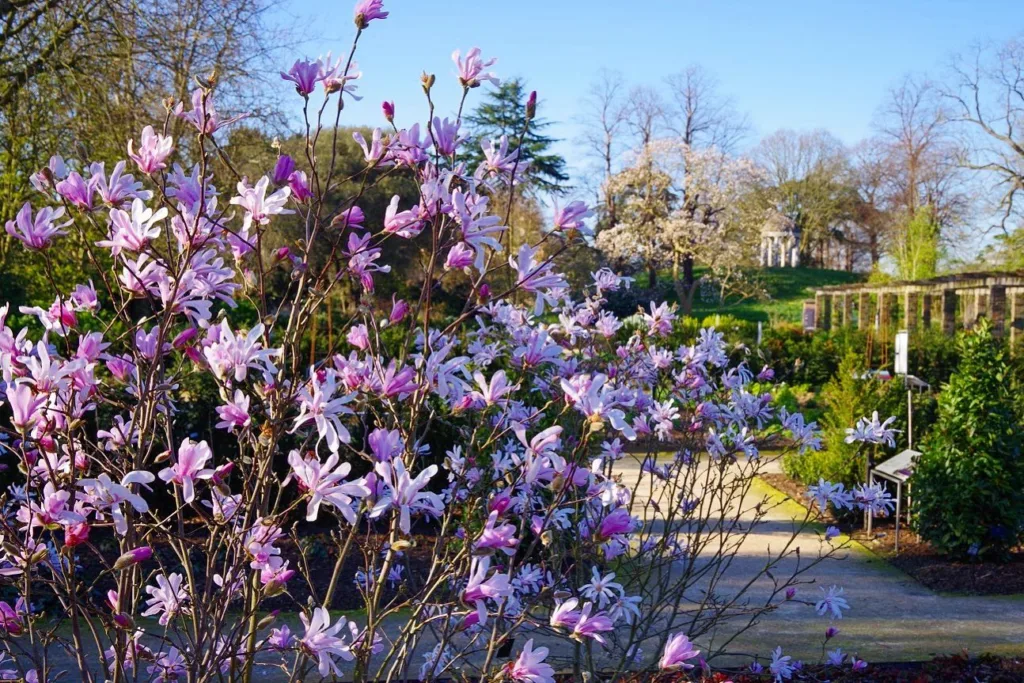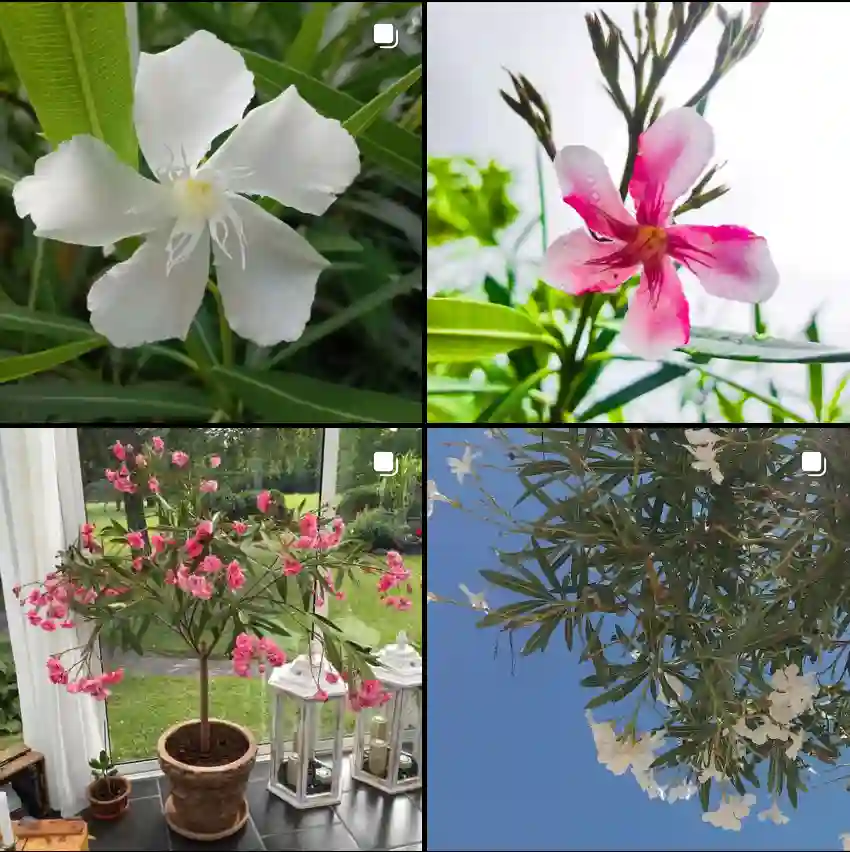
October 5 – Capparis
"Capparis, the caper bush, defines October 5."
Capparis symbolizes resilience and creativity. You find innovative solutions and thrive under pressure. Like its versatile uses, your potential is boundless.
A World of Capers: My Exploration of the Capparis Genus
As a botanist, my fascination with the plant world knows no bounds. But there’s a particular genus that has always held a special place in my heart: Capparis. This diverse group of flowering plants, belong to the Capparaceae family, commonly known as caper shrubs or caperbushes, boasts over 140 species scattered across the subtropical and tropical regions of Africa, Eurasia, Australasia, and the Pacific.
My journey into the world of Capparis began with a simple encounter – a jar of capers in my local market. These tiny, pickled flower buds, bursting with flavor, sparked a curiosity that led me down a botanical rabbit hole. I soon discovered that these culinary delights came from a fascinating genus with a rich history and a wide array of uses.
Diverse Forms and Habitats
Capparis species are incredibly diverse, ranging from sprawling shrubs to woody climbers. They thrive in a variety of habitats, from arid deserts and rocky outcrops to lush rainforests and coastal dunes. This adaptability is a testament to their resilience and evolutionary success.
One of the most striking features of Capparis is their showy flowers. These blooms come in a variety of colors, from pristine white and delicate pink to vibrant yellow and deep purple. The flowers are typically large and fragrant, attracting a diverse array of pollinators, including bees, butterflies, and even bats.
But the true magic of Capparis lies in their fruit. These berries, often referred to as caper berries, are equally diverse in size, shape, and color. Some are small and round, while others are elongated and resemble cucumbers. They can be green, yellow, red, or even purple when ripe. These fruits are not only a visual treat but also an important food source for various animals, including birds and mammals.
A Genus of Many Uses
Capparis has a long history of human use, dating back thousands of years. The most well-known use is, of course, the culinary application of capers. These pickled flower buds are a staple in Mediterranean cuisine, adding a unique piquant flavor to dishes like pasta puttanesca, chicken piccata, and bagels with lox.
But the uses of Capparis extend far beyond the kitchen. In traditional medicine, various parts of the plant have been used to treat a wide range of ailments, from headaches and toothaches to skin infections and even cancer. Some species are also used in agroforestry and as ornamental plants.
Exploring the Species
The sheer diversity of Capparis species is truly remarkable. Here are:
- Capparis acutifolia Sweet
- Capparis annamensis (Baker f.) M.Jacobs
- Capparis anomala (F.Muell.) Christenh. & Byng
- Capparis arborea (F.Muell.) Maiden
- Capparis artensis Montrouz.
- Capparis assamica Hook.f. & Thomson
- Capparis averyanovii Fici, Lanors. & Souvann.
- Capparis bachii Sy, R.K.Choudhary & Joongku Lee
- Capparis batianoffii Guymer
- Capparis beneolens Gagnep.
- Capparis bodinieri H.Lév.
- Capparis brachybotrya Hallier f.
- Capparis brassii DC.
- Capparis brevispina DC.
- Capparis burmanica Collett & Hemsl.
- Capparis buwaldae M.Jacobs
- Capparis callophylla Blume
- Capparis canescens Banks ex DC.
- Capparis cantoniensis Lour.
- Capparis cartilaginea Decne.
- Capparis cataphyllosa M.Jacobs
- Capparis chingiana B.S.Sun
- Capparis chrysomeia Bojer
- Capparis cinerea M.Jacobs
- Capparis cleghornii Dunn
- Capparis corymbosa Lam.
- Capparis cucurbitina King
- Capparis daknongensis Sy, G.C.Tucker, Cornejo & Joongku Lee
- Capparis danielii Murugan, R.Manik., S.P.Nithya, B.Karthik & Arisdason
- Capparis dasyphylla Merr. & F.P.Metcalf
- Capparis decidua (Forssk.) Edgew.
- Capparis diffusa Ridl.
- Capparis dioica Gilg
- Capparis divaricata Lam.
- Capparis diversifolia Wight & Arn.
- Capparis dongvanensis Sy, B.H.Quang & D.V.Hai
- Capparis echinocarpa Pierre ex Gagnep.
- Capparis erycibe Hallier f.
- Capparis erythrocarpos Isert
- Capparis fascicularis DC.
- Capparis fengii B.S.Sun
- Capparis flavicans Kurz
- Capparis floribunda Wight
- Capparis florida Fici & Souvann.
- Capparis fohaiensis B.S.Sun
- Capparis formosana Hemsl.
- Capparis fusifera Dunn
- Capparis gialaiensis Sy
- Capparis grandidieri Baill.
- Capparis grandiflora Wall. ex Hook.f. & Thomson
- Capparis grandis L.f.
- Capparis henryi Matsum.
- Capparis hereroensis Schinz
- Capparis heteracantha DC.
- Capparis himalayensis Jafri
- Capparis hinnamnoensis Souvann. & Fici
- Capparis humistrata (F.Muell.) F.Muell.
- Capparis hypovellerea Gilg & Gilg-Ben.
- Capparis incanescens DC.
- Capparis irenae Fici
- Capparis jacobsii Hewson
- Capparis kbangensis Sy & D.V.Hai
- Capparis kebarensis Fici
- Capparis kenaboiensis Julius
- Capparis khuamak Gagnep.
- Capparis klossii Ridl.
- Capparis koioides M.Jacobs
- Capparis kollimalayana M.B.Viswan.
- Capparis lanceolaris DC.
- Capparis lanceolatifolia Fici, Bouaman. & Souvann.
- Capparis laotica Gagnep.
- Capparis lasiantha R.Br. ex DC.
- Capparis lianosa Fici & Souvann.
- Capparis lobbiana Turcz.
- Capparis longestipitata Heine
- Capparis longgangensis S.L.Mo & X.S.Lee ex Y.S.Huang
- Capparis loranthifolia Lindl.
- Capparis macleishii (A.G.Mill.) Christenh. & Byng
- Capparis macrantha Souvann., Fici & Lanors.
- Capparis masaikai H.Lév.
- Capparis mekongensis Gagnep.
- Capparis membranifolia Kurz
- Capparis micracantha DC.
- Capparis micrantha A.Rich.
- Capparis mitchellii (F.Muell.) Lindl.
- Capparis monantha M.Jacobs
- Capparis moonii Wight
- Capparis multiflora Hook.f. & Thomson
- Capparis nilgiriensis Subba Rao, Kumari & V.Chandras.
- Capparis nobilis (Endl.) F.Muell. ex Benth.
- Capparis nummularia DC.
- Capparis olacifolia Hook.f. & Thomson
- Capparis ornans F.Muell. ex Benth.
- Capparis oxycarpa Fici, Aver. & Sy
- Capparis pachyphylla M.Jacobs
- Capparis parvifolia Fici
- Capparis phatadke Fici, Lanors., Lamxay & Souvann.
- Capparis poggei Pax
- Capparis pranensis (Pierre ex Gagnep.) M.Jacobs
- Capparis pseudocerasifera Hauman
- Capparis pubiflora DC.
- Capparis pubifolia B.S.Sun
- Capparis pyrifolia Lam.
- Capparis quiniflora DC.
- Capparis radula Gagnep.
- Capparis ramonensis Danin
- Capparis rheedei DC.
- Capparis richardii Baill.
- Capparis rigida M.Jacobs
- Capparis rotundifolia Rottler
- Capparis roxburghii DC.
- Capparis rufidula M.Jacobs
- Capparis sabiifolia Hook.f. & Thomson
- Capparis sandwichiana DC.
- Capparis sarmentosa A.Cunn. ex Benth.
- Capparis scortechinii King
- Capparis sepiaria L.
- Capparis shanesiana F.Muell.
- Capparis shevaroyensis Sundararagh.
- Capparis siamensis Kurz
- Capparis sikkimensis Kurz
- Capparis spinosa L. – Plant FAQs: Capparis Spinosa – Caper Plant
- Capparis srilankensis Sundararagh.
- Capparis subacuta Miq.
- Capparis subsessilis B.S.Sun
- Capparis sunbisiniana M.L.Zhang & G.C.Tucker
- Capparis tagbanuorum Fici
- Capparis tchaourembensis Fici
- Capparis tenera Dalzell
- Capparis thorelii Gagnep.
- Capparis thozetiana (F.Muell.) F.Muell.
- Capparis tomentosa Lam.
- Capparis tonkinensis Gagnep.
- Capparis trichocarpa B.S.Sun
- Capparis trinervia Hook.f. & Thomson
- Capparis trisonthiae Srisanga & Chayam.
- Capparis umbonata Lindl.
- Capparis urophylla F.Chun
- Capparis velutina P.I.Forst.
- Capparis versicolor Griff.
- Capparis viburnifolia Gagnep.
- Capparis viminea Oliv.
- Capparis wui B.S.Sun
- Capparis yunnanensis Craib & W.W.Sm.
- Capparis zeylanica L.
- Capparis zippeliana Miq.
The Future of Capparis
As we face growing challenges like climate change and food security, the importance of understanding and utilizing plant diversity cannot be overstated. Capparis, with its adaptability, resilience, and diverse uses, holds great potential for the future.
Whether it’s developing new food sources, exploring medicinal properties, or utilizing species for ecological restoration, the possibilities are endless. As a botanist, I am excited to continue my exploration of this fascinating genus and contribute to unlocking its full potential for the benefit of humanity and the planet.
If i die, water my plants!



